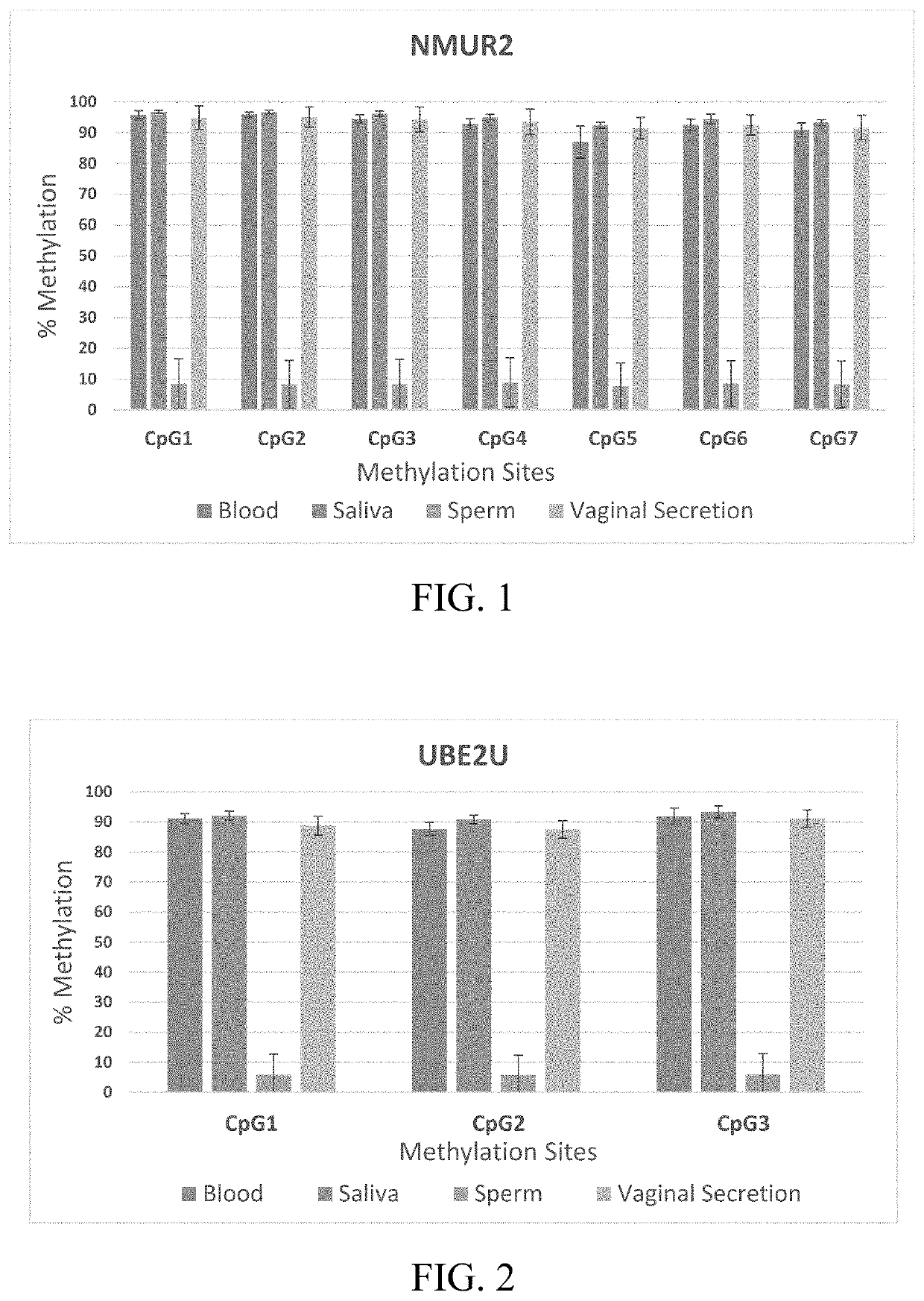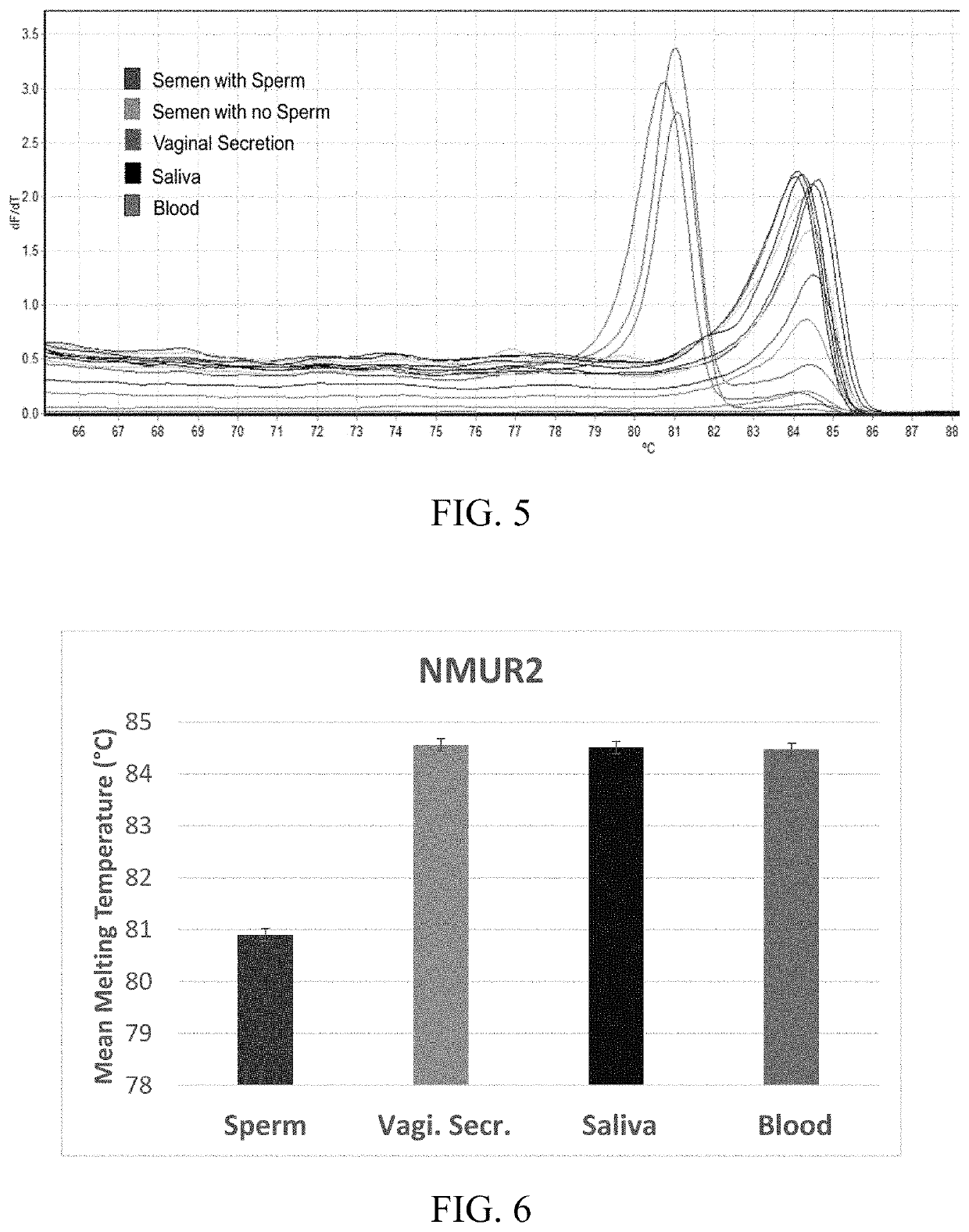DNA methylation assays for body fluid identification
a methylation assay and body fluid technology, applied in the direction of microbiological testing/measurement, biochemistry apparatus and processes, etc., can solve the problems of inability to confirm, destroy the sample, impractical for forensic specimens, etc., and achieve tissue specific and sensitive effects
- Summary
- Abstract
- Description
- Claims
- Application Information
AI Technical Summary
Benefits of technology
Problems solved by technology
Method used
Image
Examples
example 1
Primers for Genomic Loci Specific for Body Fluids
[0311]A set of 12 body fluid samples including blood, saliva, semen, and vaginal secretions were used for preliminary evaluation of body fluid identification using 20 different probe methylation sites. Pyrosequencing was used to perform the methylation analysis for the preliminary evaluation at the 21 probe sites located at 12 genetic loci. Four genomic locations were found that contained differentially methylated regions that were tissue specific of which two were found to be markers for sperm, one or buccal epithelial cell, and one for blood. These four body fluid markers were further screened using pyrosequencing and HRM analysis.
[0312]Pyrosequencing Data:
[0313]A total of 89 samples were used to further examine the three differentially methylated regions identified including 23 blood, 24 saliva, 20 semen, and 22 vaginal secretion samples. The methylation profiles were successfully analyzed using bisulfite conversion and pyrosequenc...
example 2
tion of the Source Body Fluids Based on the DNA Methylation Levels at Loci Specific for Body Fluids
[0319]This Example relates to identifying new tDMRs that can be used as biomarkers for forensic body fluid discrimination. Using the discovered tDMR, DNA methylation assays were developed based on pyrosequencing or HRM analysis.
[0320]Two novel epigenetic loci, namely NMUR2 and UBE2U, were found to differentiate semen from other body fluids, such as blood, saliva, and vaginal secretion). The AHRR locus was able to distinguished blood from other three tissues using the analysis of methylation signatures of each tissue. In addition, one saliva marker (SA-6) was identified to be saliva specific in which the saliva samples were hypermethylated compared to the other body fluids. Thus, the intergenic region at SA-6 marker located upstream from cg11536474 was able to differentiate saliva while AHRR could distinguish blood from other three body fluids using the analysis of methylation signature...
PUM
| Property | Measurement | Unit |
|---|---|---|
| melting temperature | aaaaa | aaaaa |
| melting temperature | aaaaa | aaaaa |
| melting temperature | aaaaa | aaaaa |
Abstract
Description
Claims
Application Information
 Login to View More
Login to View More - R&D
- Intellectual Property
- Life Sciences
- Materials
- Tech Scout
- Unparalleled Data Quality
- Higher Quality Content
- 60% Fewer Hallucinations
Browse by: Latest US Patents, China's latest patents, Technical Efficacy Thesaurus, Application Domain, Technology Topic, Popular Technical Reports.
© 2025 PatSnap. All rights reserved.Legal|Privacy policy|Modern Slavery Act Transparency Statement|Sitemap|About US| Contact US: help@patsnap.com



